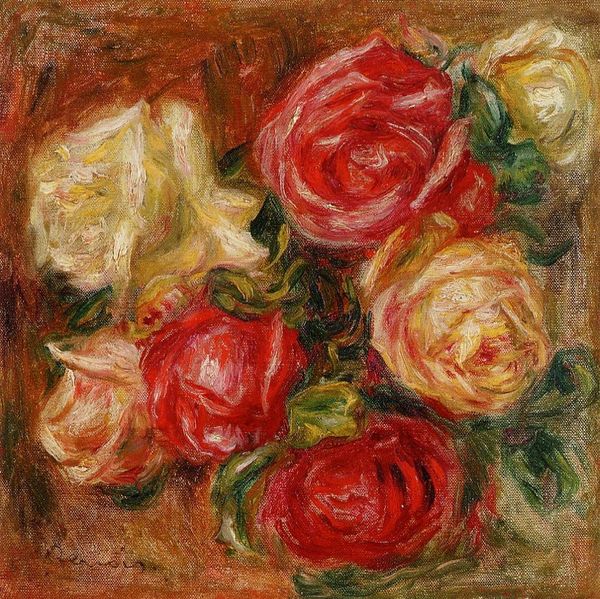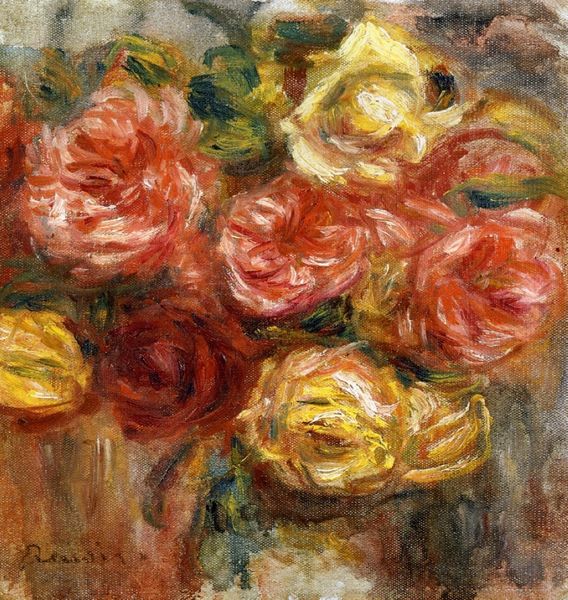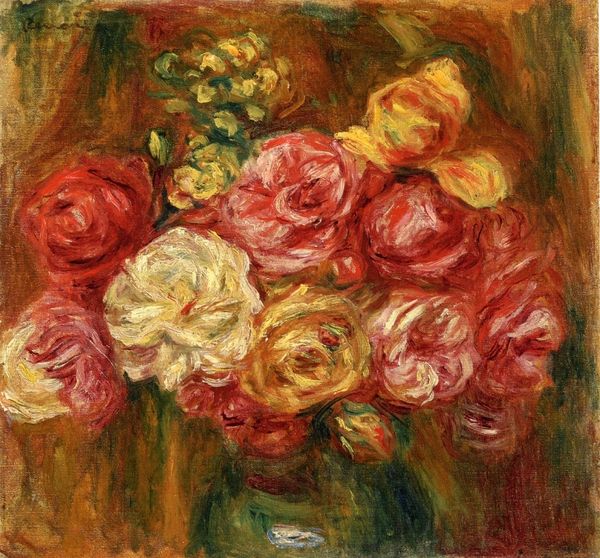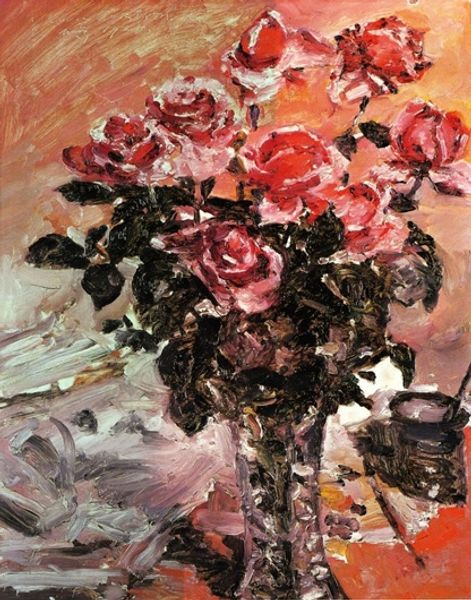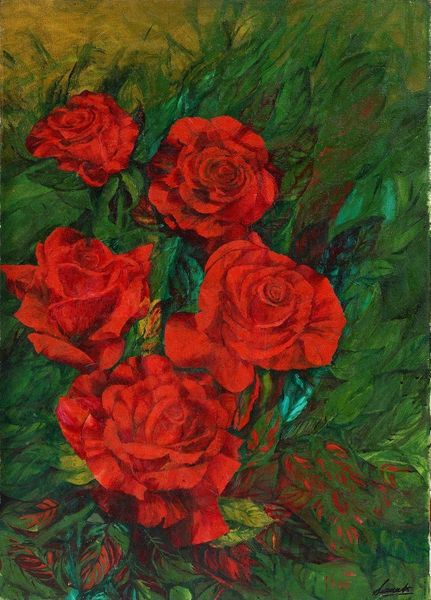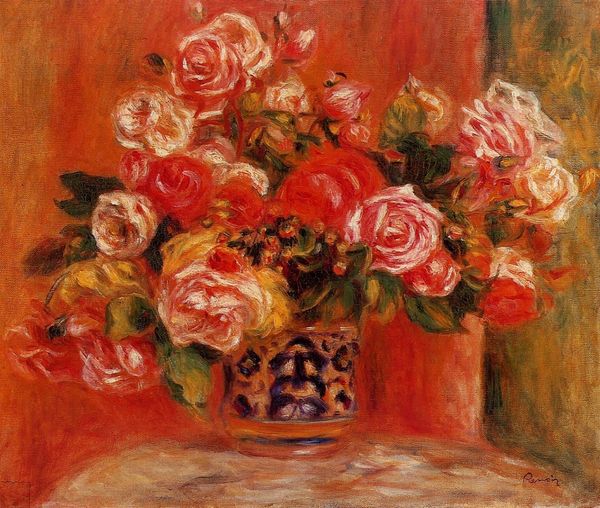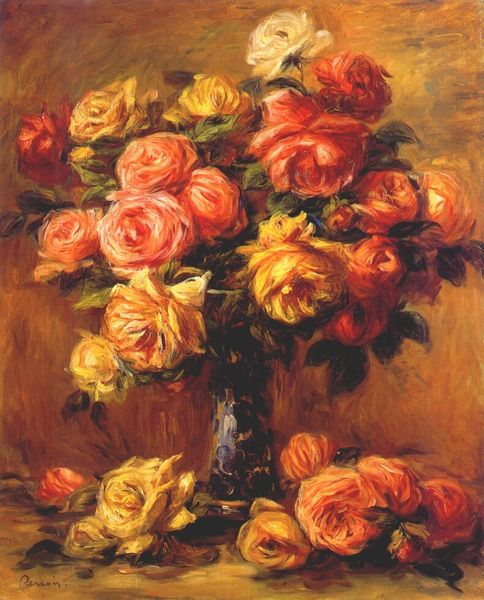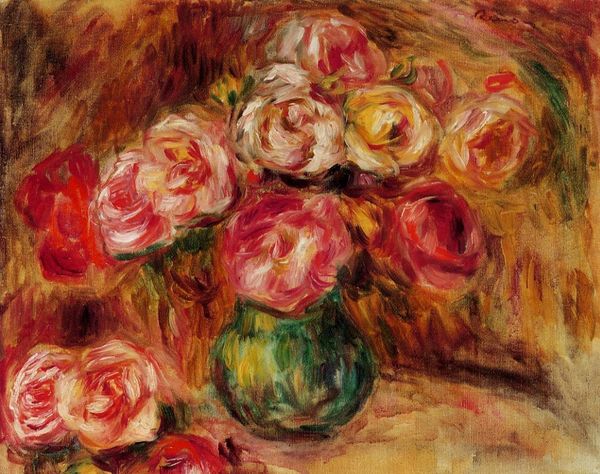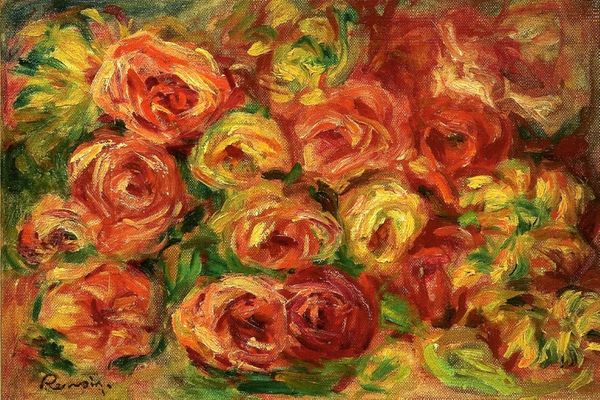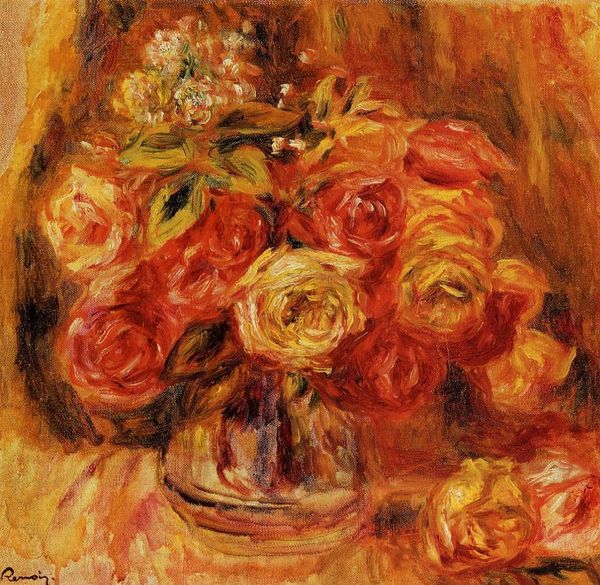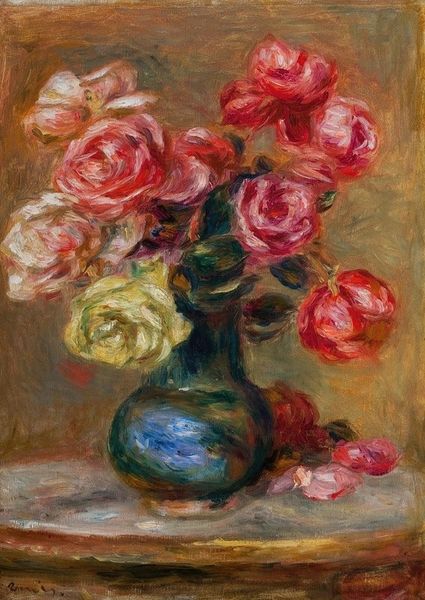
Dimensions: 33 x 29.5 cm
Copyright: Public domain
Editor: We’re looking at Renoir’s “Moss Roses,” an oil painting from 1890. The roses almost vibrate on the canvas! What strikes you about this piece? Curator: It’s tempting to get lost in the beauty, but let’s think about what goes into this beauty. Consider the pigment. Where did these intense reds and greens come from in 1890? Who mined them, processed them? What was the painter's relationship with his suppliers? Editor: That’s… a perspective I hadn’t considered. So, beyond the aesthetic, you're interested in the entire production chain? Curator: Precisely. And it’s not just the pigments, think about the canvas. What kind of labor was involved in creating the surface that allowed Renoir to execute his vision? How does industrialization impact that supply chain? Editor: I suppose art history often focuses on the artist's intent and less on those material conditions. Curator: Right. We often detach the ‘art’ from the process, from the laborers that make art possible, implicitly placing aesthetic decisions and cultural capital on one plane and simple labor on another. Even Renoir’s ‘impressionistic’ technique here, look closely – it hides a complex manipulation of materials and labor. Is this style therefore complicit in hiding labor, or does it call attention to the hand of the artist and by proxy to those others too? Editor: I see what you mean. The focus on brushstrokes and color becomes a mask… or maybe a subtle reminder of the materials themselves. That gives me a lot to think about. Curator: Exactly! Looking at art through the lens of materiality forces us to acknowledge the interconnectedness of artistic creation, industrial production, and social relations. Editor: It makes me question the romantic idea of the solitary artist. Thank you for opening my eyes to a new way of viewing art. Curator: My pleasure. Art exists in a wider web than is normally seen.
Comments
No comments
Be the first to comment and join the conversation on the ultimate creative platform.
